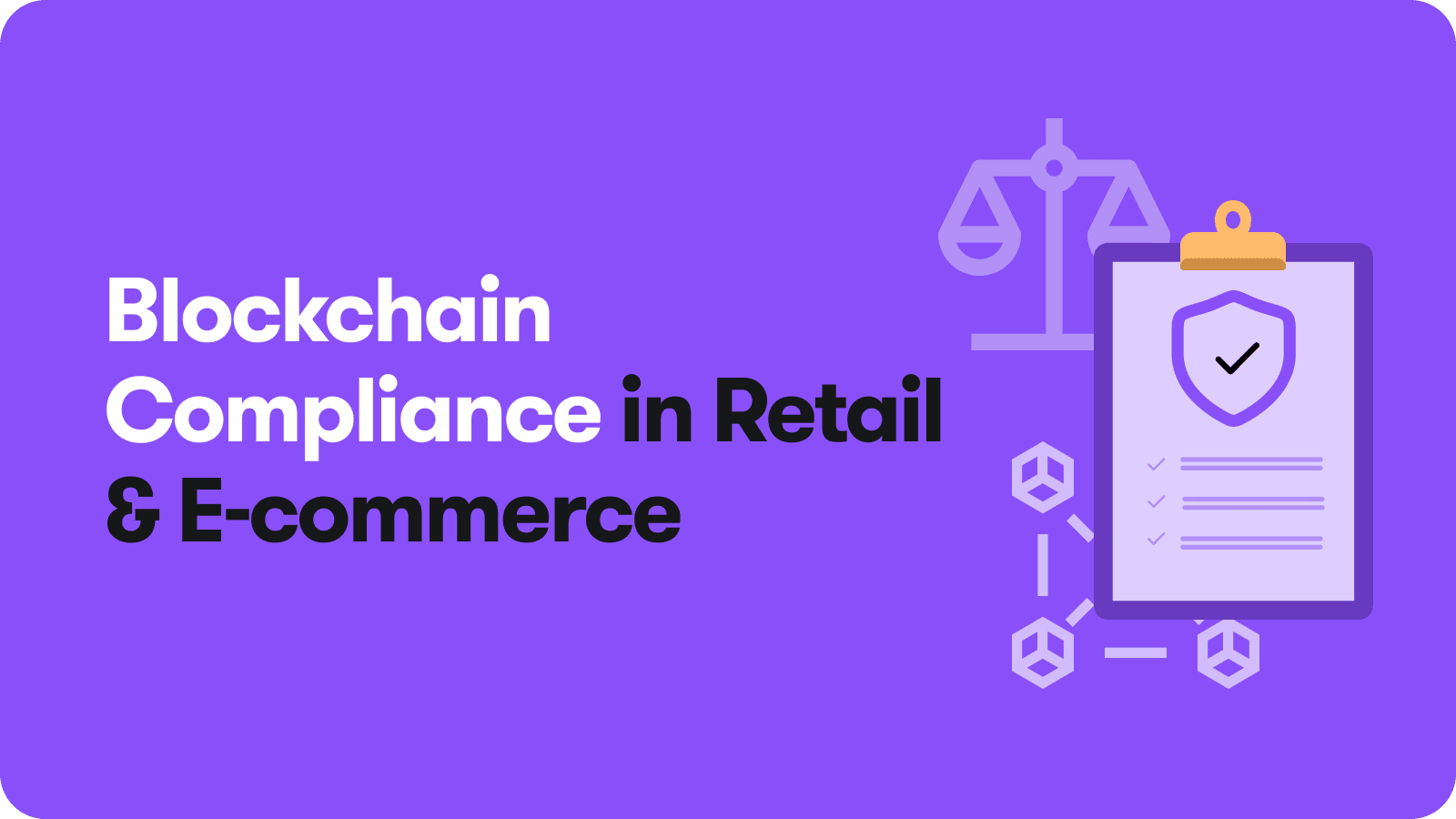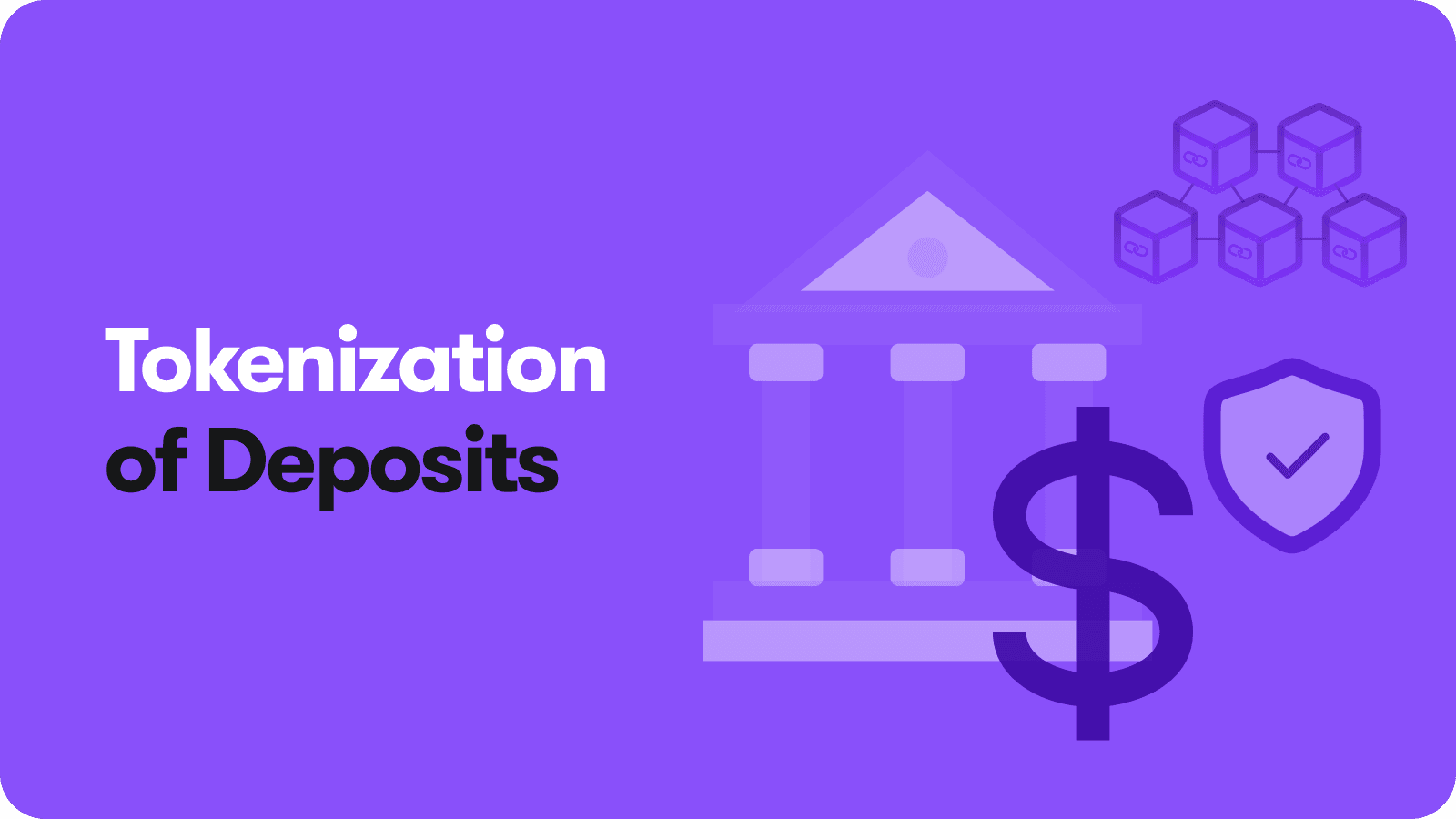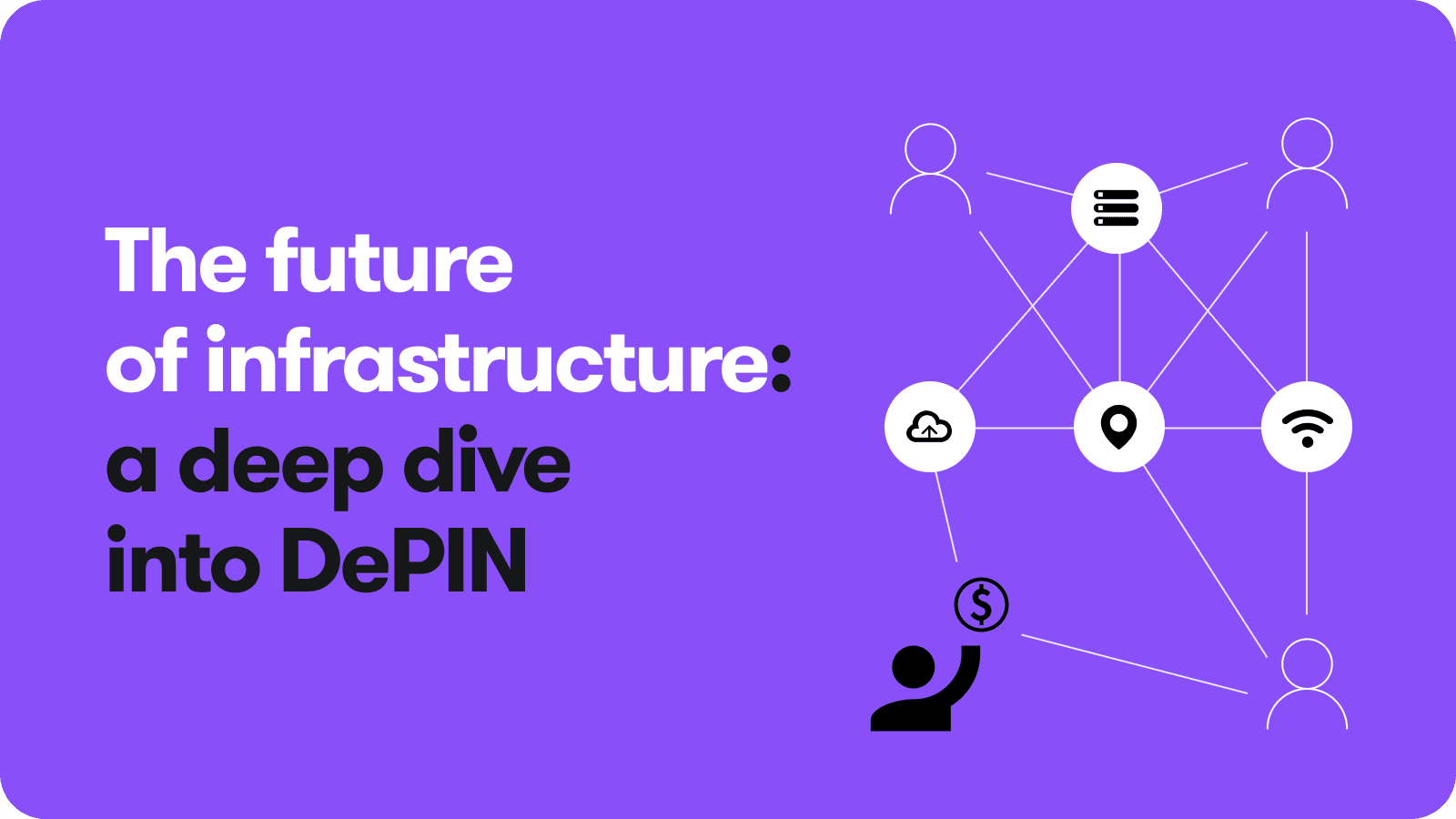
How to Ensure Regulatory Compliance When Building Blockchain solution for Retail & E-commerce
2 September 2025Blockchain Compliance in Retail & E-commerce
How to Ensure Regulatory Compliance When Building Blockchain solution for Retail & E-commerce
When using blockchain, retail and e-commerce gain a handful of benefits such as faster payments, better transparency, lower costs, and automated transactions through smart contracts. However, there’s a reverse side to this coin as well.
As the regulatory framework matures, navigating it becomes more challenging.
Unlike traditional platforms, blockchain-based tools usually involve irreversible payments, operate across borders, and often include tokenized assets. These factors make it difficult to comply with existing regulatory frameworks and place these solutions under greater scrutiny from regulators.
This article aims to highlight the key compliance rules for blockchain dApps to follow and to provide a step-by-step guide on integrating compliance into the development process.
Key Compliance Rules to Follow
When it comes to regulations and technical safeguards, e-commerce and retail have their own specifics. The following rules cover the basic measures that developers must implement to ensure legal compliance and user trust.
1. Consumer Protection Laws
Since retail and e-commerce companies deal directly with customers, it’s crucial for the dApp you build to comply with global consumer protection laws.
First, the dApp must offer transparent pricing and display clear information about the product.
Next, blockchain transactions are typically irreversible, allowing merchants to provide refunds at their sole discretion. Therefore, return policies must be clearly specified as well.
Finally, the dApp must offer a mechanism for dispute resolution since smart contracts can’t mediate human errors or exceptional cases by themselves. Implementing an off-chain customer service portal may help solve this problem.
2. E-commerce & Digital Services Regulations
Ensure that the dApp follows the platform's liability rules, defining the platform’s responsibility for both sellers' and customers’ activities.
For example, EU laws require platforms to remove illegal content when notified and to provide users with a mechanism to report such content.
There is also the Sales of Goods law, which regulates merchants' activities in the UK, Australia, and a few other regions. It requires specifying refund timelines, meaning smart contracts must not permanently lock funds.
Finally, different cross-border sales rules require disclosing shipping terms, taxes, and customs.
3. KYC / AML
If the dApp deals with crypto payments, tokenized rewards, or peer-to-peer marketplaces, FATF guidelines may treat you as a virtual asset service provider (VASP).
This means you must diligently collect customer identity information and monitor suspicious activities to avoid fines.
4. Tax Compliance
Although cryptocurrencies are not legal tender in most countries, the income businesses earn in crypto is still subject to taxation. The rules and tax rates vary by region.
Typically, crypto earnings are subject to capital gains tax and sometimes to VAT. Conduct your own research or consult a specialist to ensure compliance.
5. Data Privacy Regulations
Data privacy rules are especially relevant for regions under GDPR (the EU). Other significant regulatory frameworks include CCPA in California, PIPEDA in Canada, and various local laws in Japan, Brazil, and Australia.
Typically, these regulations require not storing personally identifiable information (PII) on-chain, obtaining explicit consent for data collection, offering the “right to be forgotten” when storing data off-chain, and maintaining a clear and accessible privacy policy.
A Step-by-Step Guide to Building a Compliant Blockchain Tool
Building a secure and compliant decentralized application is not difficult if you conduct due research and plan everything beforehand. Here’s what the process may look like:
1. Understand the Regulatory Landscape
Different jurisdictions have different rules when working with retail and e-commerce customers. Study your local consumer protection laws, payment regulations, data privacy laws, AML/KYC requirements, and taxation policies.
When working globally, also consider region-specific regulations such as:
- MiCA in Europe
- SEC, CFTC, and FinCEN in the USA
- MAS and FSA in Asia
2. Choose the Right Blockchain Infrastructure
Decide whether to use a permissioned or permissionless blockchain for building your dApp. The first option provides greater control and easier compliance, while the second offers more freedom to your customers.
3. Build Compliant Smart Contracts
To ensure compliance, smart contracts must include dispute resolution mechanisms via third-party arbitrators (e.g., DAOs or external oracles).
Additionally, contracts must allow modifications and upgrades to adapt to legal changes.
4. Integrate KYC/AML Where Needed
This step is an absolute must-have if your dApp handles crypto payments, tokenized loyalty programs, cross-border digital asset transfers, or other value exchanges. You may create your own in-house KYC/AML team or outsource to third-party providers.
5. Ensure Data Privacy & GDPR Compliance
If end-users must provide personal data, obtain their explicit consent. Minimize data collection and implement the right to be forgotten. Store PII off-chain with hashed references instead of recording it on-chain.
6. Ensure Token Compliance (if applicable)
If your dApp issues tokens, determine whether they are stablecoins, NFTs, utility tokens, or security tokens. Check up-to-date regulatory requirements in the regions where your dApp operates to ensure full compliance.
For instance, in the EU, the latest MiCA developments require stablecoin issuers to maintain a 1:1 reserve ratio, while security tokens fall under existing MiFID and securities laws.
7. Maintain Continuous Legal Oversight
The legal landscape constantly evolves. Therefore, it’s wise to partner with lawyers experienced in fintech and blockchain to stay up-to-date with current developments.
Bottom Line
Compliance is not only about avoiding penalties. It also helps developers build secure and trustworthy ecosystems that can address security challenges and protect users. By embedding compliance into product design from the start, businesses can stay ahead of regulatory requirements and reduce operational risks.
Other blog posts
Want to read more? Discover our other articles below!

Tokenisation of Deposits
10 September 2025

